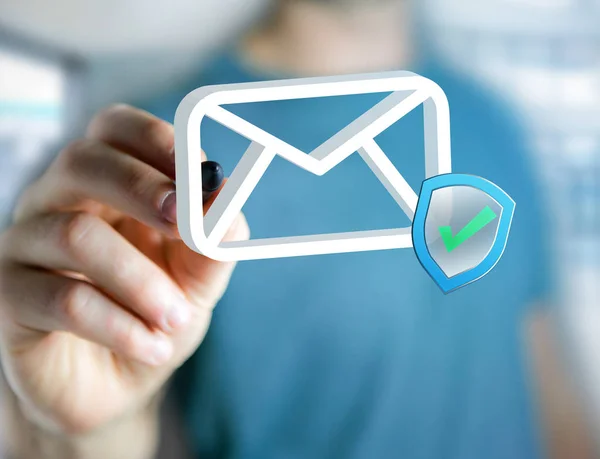Leveraging DMARC Reports To Strengthen Your Email Security Posture
In today's digital landscape, email remains a crucial communication tool for businesses of all sizes. However, alongside its convenience comes the ever-present threat of email-based attacks such as phishing, spoofing, and malware distribution. To combat these threats effectively, organizations need robust email security measures in place. One such measure gaining traction is Domain-based Message Authentication, Reporting, and Conformance (DMARC). This article delves into the significance of DMARC reports and how leveraging them can bolster your email security posture. View further information here on dmarc report.
Understanding DMARC
DMARC is an email authentication protocol that builds upon the widely used Sender Policy Framework (SPF) and DomainKeys Identified Mail (DKIM) standards. It enables domain owners to specify how their emails should be authenticated and what actions to take if authentication fails. With DMARC, organizations can protect their domains from unauthorized use in email attacks, thereby enhancing trust in their communications.
How DMARC Works
At its core, DMARC works by allowing domain owners to publish policies in their DNS records, instructing email receivers on how to handle messages that claim to originate from their domains. When an email is received, the recipient's email server checks the sender's domain for DMARC records. Based on the policy specified (e.g., "none," "quarantine," or "reject"), the email server takes appropriate action, such as delivering the email, marking it as spam, or rejecting it outright.
The Role of DMARC Reports

While implementing DMARC policies is essential, monitoring and analyzing DMARC reports are equally crucial for maintaining email security. DMARC reports provide valuable insights into how email traffic is being handled by various email servers across the internet. These reports help domain owners identify authentication failures, unauthorized senders, and potential threats targeting their domains.
Types of DMARC Reports
DMARC reports come in two main types: aggregate (RUA) and forensic (RUF). Aggregate reports provide an overview of email authentication activity, including pass, fail, and alignment results. On the other hand, forensic reports offer detailed information about individual email messages, aiding in the investigation of specific incidents or anomalies.
Analyzing DMARC Reports
Analyzing DMARC reports involves reviewing authentication results, identifying sources of failed authentication, and taking corrective actions as necessary. By regularly examining these reports, organizations can gain visibility into their email ecosystem, identify weaknesses in their authentication setup, and fine-tune their DMARC policies for optimal security.
Leveraging DMARC Reports for Enhanced Security
Now, let's explore how organizations can leverage DMARC reports to strengthen their email security posture:
- Identify Unauthorized Senders: DMARC reports help organizations identify unauthorized sources attempting to send emails on behalf of their domains. By scrutinizing these reports for failed authentication attempts, organizations can pinpoint malicious actors attempting to spoof their brand or domain.
- Improve Email Deliverability: Analyzing DMARC reports can reveal legitimate sources failing authentication due to misconfigured SPF or DKIM records. By rectifying these issues, organizations can improve their email deliverability rates and ensure that legitimate emails reach their intended recipients without being marked as spam or rejected by email filters.
- Enhance Incident Response: Forensic DMARC reports provide detailed information about individual email messages, including headers, authentication results, and delivery paths. In the event of a security incident or suspected phishing attack, these reports serve as valuable forensic evidence, aiding in incident response and investigation efforts.
- Fine-tune DMARC Policies: Regularly reviewing DMARC reports allows organizations to assess the effectiveness of their current DMARC policies and make informed decisions about policy adjustments.
Expanding Your Email Security Toolkit
While DMARC reports play a crucial role in enhancing email security, they are just one piece of the larger puzzle. To build a comprehensive email security strategy, organizations should consider integrating DMARC with other security measures and best practices. Let's explore some additional components that can further strengthen your email security posture:
Email Encryption
Email encryption ensures that sensitive information remains protected during transmission, preventing unauthorized access by third parties. By encrypting both outgoing and incoming emails, organizations can safeguard sensitive data from interception and eavesdropping. Implementing email encryption protocols such as Transport Layer Security (TLS) or Pretty Good Privacy (PGP) adds an extra layer of security to your email communications.
User Awareness Training
No matter how robust your technical defenses are, human error remains a significant risk factor in email security. Phishing attacks, in particular, rely on tricking users into divulging sensitive information or clicking on malicious links. Comprehensive user awareness training programs educate employees about the various forms of email-based threats, teach them how to identify suspicious emails, and instruct them on best practices for handling sensitive information securely.
Multi-Factor Authentication (MFA)
Multi-factor authentication adds an additional layer of security to user accounts by requiring users to provide multiple forms of verification before gaining access. By implementing MFA for email accounts, organizations can mitigate the risk of unauthorized access in the event of stolen or compromised credentials. Common forms of MFA include one-time passwords, biometric authentication, and hardware tokens, providing added assurance that only authorized users can access email accounts.
Email Filtering and Anti-Spam Solutions
Email filtering and anti-spam solutions help organizations proactively identify and block malicious or unwanted emails before they reach users' inboxes. These solutions utilize advanced algorithms and threat intelligence to analyze incoming emails for signs of phishing, malware, or spam. By automatically filtering out suspicious emails, organizations can reduce the likelihood of users falling victim to email-based attacks and minimize the risk of malware infections or data breaches.

Incident Response and Monitoring
In addition to preventive measures, organizations must have robust incident response procedures in place to detect, contain, and remediate email security incidents promptly. Continuous monitoring of email traffic, network activity, and user behavior allows organizations to identify anomalous patterns or indicators of compromise indicative of a security breach. By establishing clear incident response protocols and leveraging security information and event management (SIEM) solutions, organizations can minimize the impact of email security incidents and prevent further damage to their infrastructure and data.
